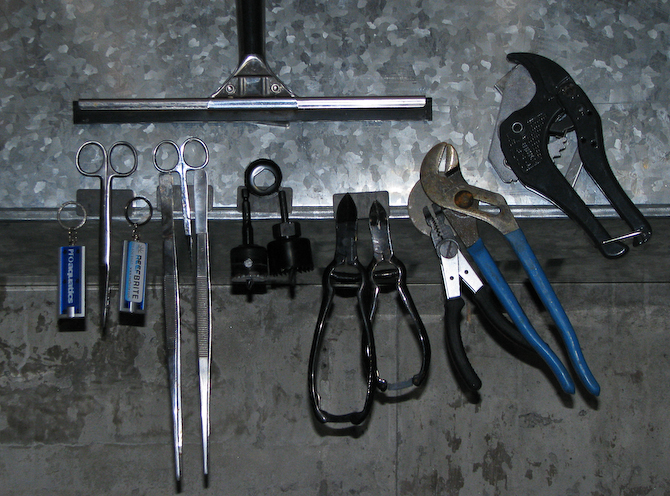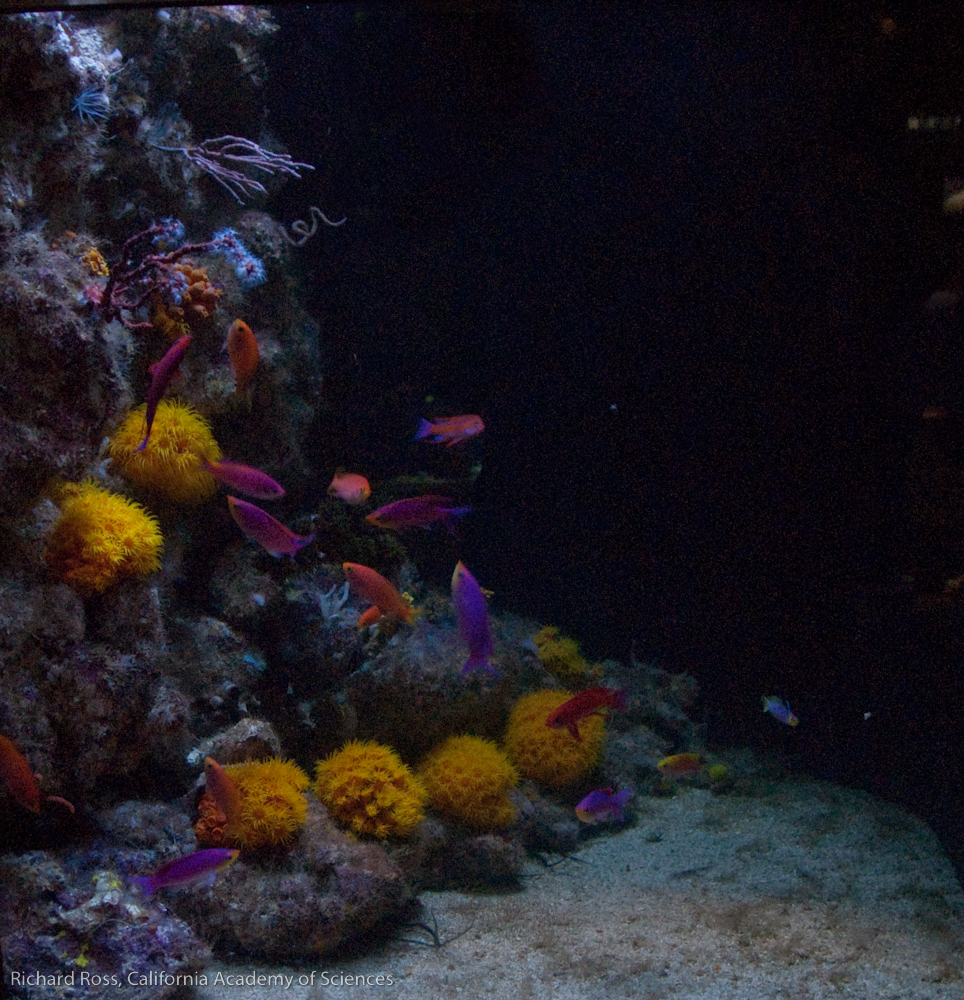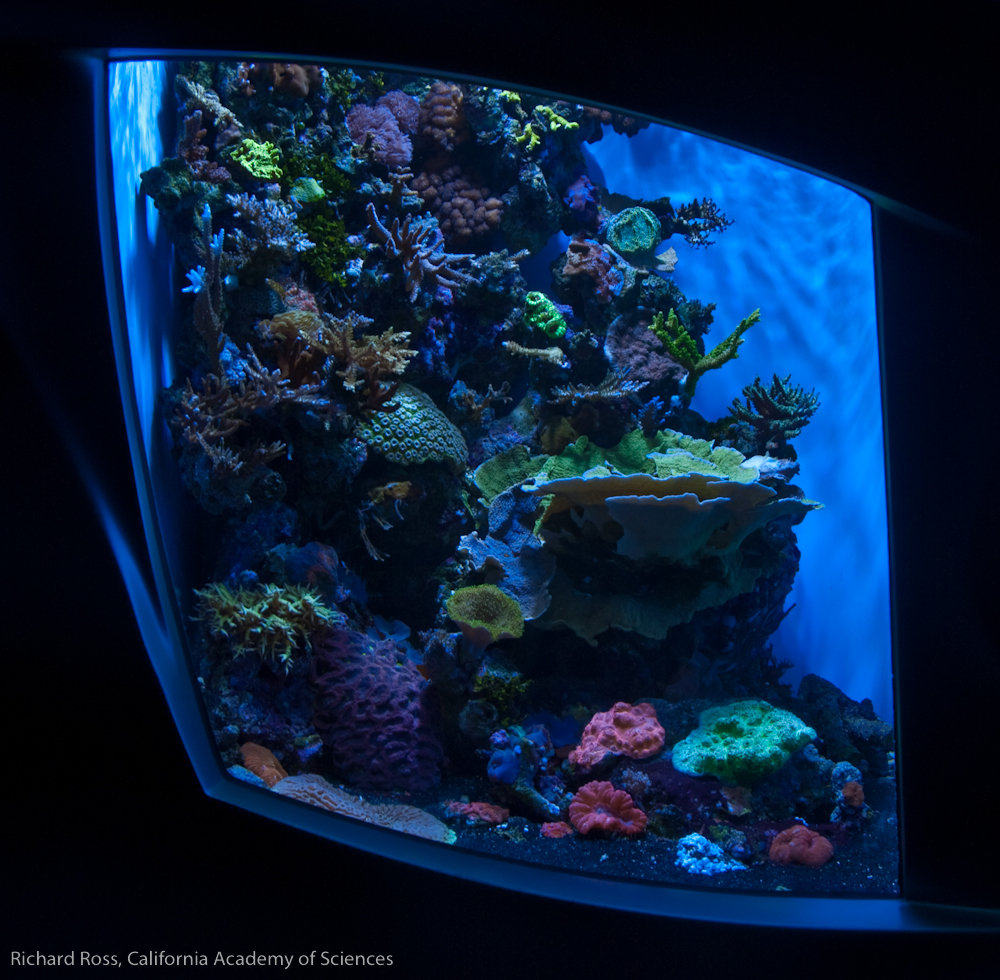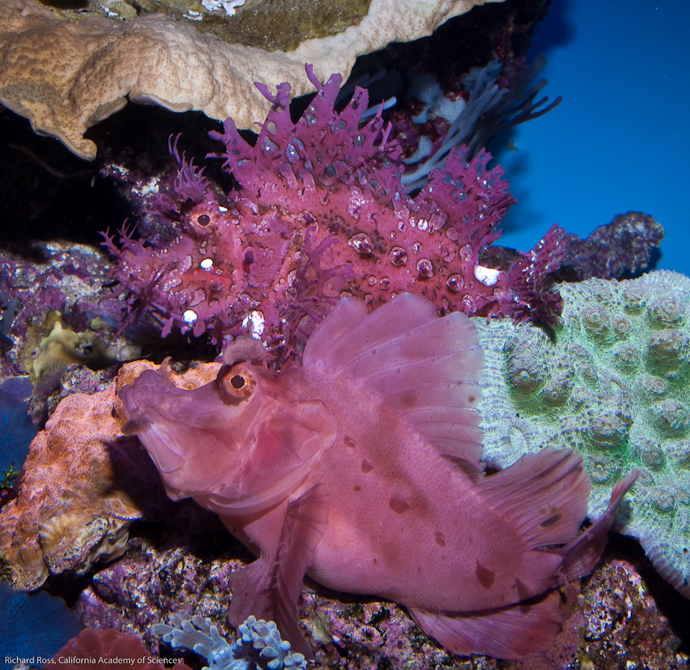Stop using the top of your tank as shelf, use magnets instead
From Reefbuilders

From Reefbuilders

From Reefbuilders

Reef Aquarium ‘Rock walls’ have gotten a bad rap over the past , as Adam Blundell recently pointed out. This reputation is not necessarily undeserved as there are plenty of rock walls that are unappealing, flow stopping, detritus collecting piles of ugh. Quickly stacking rock against the back wall of a tank is not something we advocate or enjoy looking at. However, with a tiny bit of thought and effort, its not all that hard to make unique and interesting looking rock wall reef aquarium. Continue reading to learn more about two creative reef rock walls on display at the California Academy of Sciences.
The reef rock walls were constructed the same way in both tanks – a bottom plate and back wall of fiber grate onto which rock is affixed with underwater epoxy and cable ties. The fiber grate armature prevents the rock structure from touching the walls of the aquarium, allowing water to move around and under the wall. Instead of filling up the back wall of the tank, these tanks use the empty space on the back wall to create a feeling of depth and openness. In the case of Matt Wandell’s ‘Deep Reef’ tank pictured above, the rock wall is on the left side of the tank, instead of the back wall. This allows for good, fast vertical flow against the rock wall that not only brings food the non photosynthetic corals, but gets the anthias all swimming in a very natural vertical orientation.
The Rhinopias exhibit is one of mine, and the rock wall is in one of the back corners of the tank. This tank has intermittent high flow to help the SPS thrive, but also has ‘eddy’ spots to allow the display fish spots to hang out. The point is that rock walls are not bad things in and of themselves. If you are willing to spend a little time planning the build instead of just stacking rock, you can make a rock wall, well, rock.

From Reefbuilders
Last MACNA in New Jersey I picked up a pair of brand spanking’ new Wyoming White (Amphiprion ocellaris) clownfish just released to the market by C-Quest via Ocean Gallery II. I flew the expensive little freak beauties home and set them up in their own 25 gallon tall, plumbed into my home 250 gallon culture system. They have their very own Stichodactyla gigantea carpet anemone which they share with a pair of porcelain crabs (Neopetrolisthes ohshimai) for neighbors. Light is from one 150 watt DE 20,000K bulb and one 24 inch Reefbrite actinic LED light strip. The water motion is provided by a Vortech MP10ES set to 70% on the longest interval of Short Pulse mode. I dig the freaks.
From Reefbuilders

By Ryan Gripp
From Reefbuilders
The California Academy of Sciences which Reef Builders’ own Richard Ross works for has been getting busy in the maternity ward. A local TV station (ABC7) interviewed the different programs that have had success, those of Asian horned frogs and cuttlefish (cuttlefish starts at around 1:48). In regards to the cuttlefish breeding project Rich said “Oh, they are just the coolest animals in the world, aren’t they? They are like little humming birds in the sea who look at you.” Yes Rich, we agree. It is interesting to point out that the work Rich is doing is the only cuttlefish breeding program in the United States, “about 350 cuttlefish have hatched so far. Both this and the frog breeding program have been so successful and the academy is now shipping babies to other aquariums and researchers around the country.” Way to go Rich!